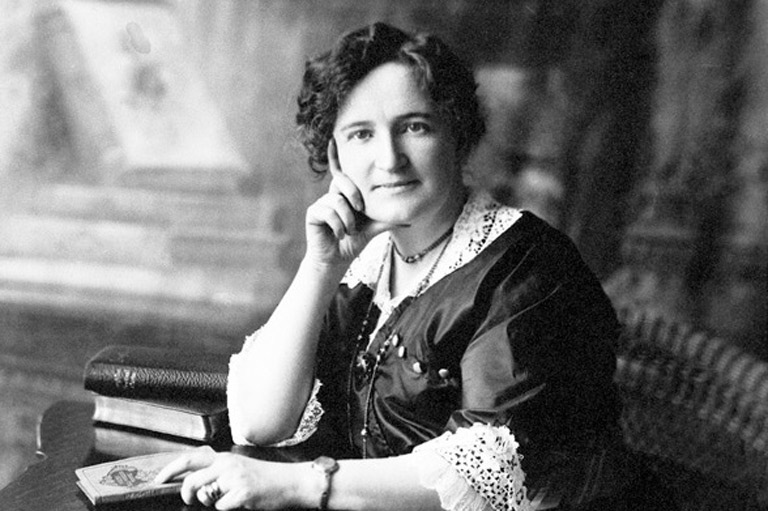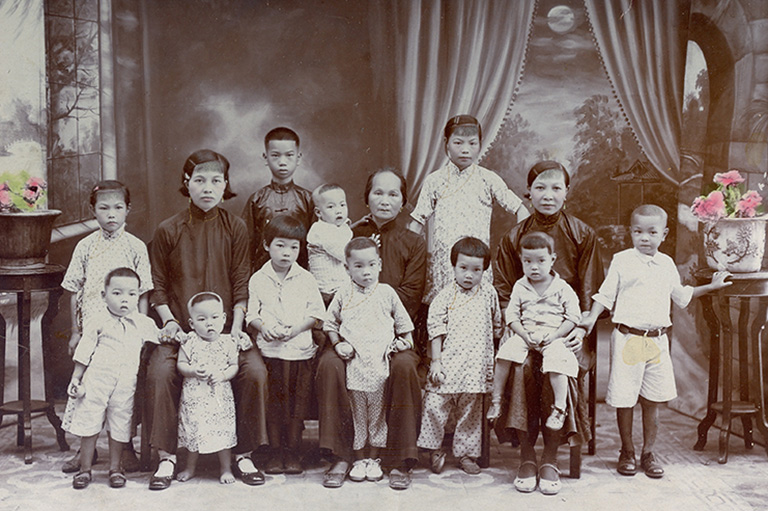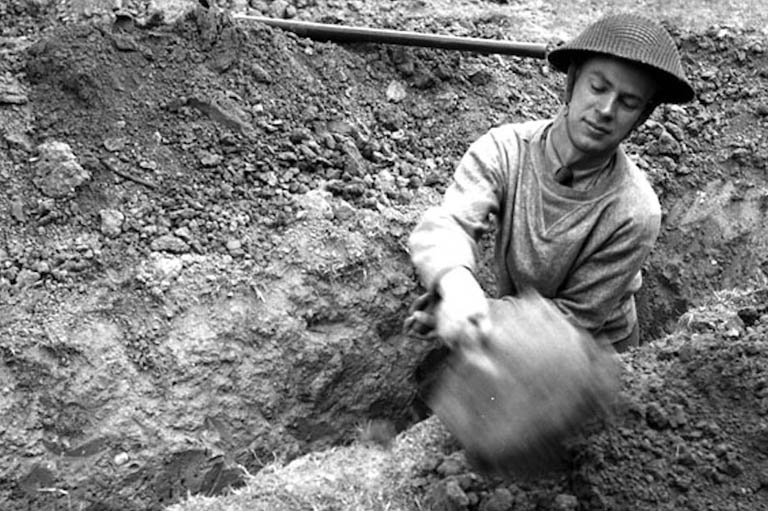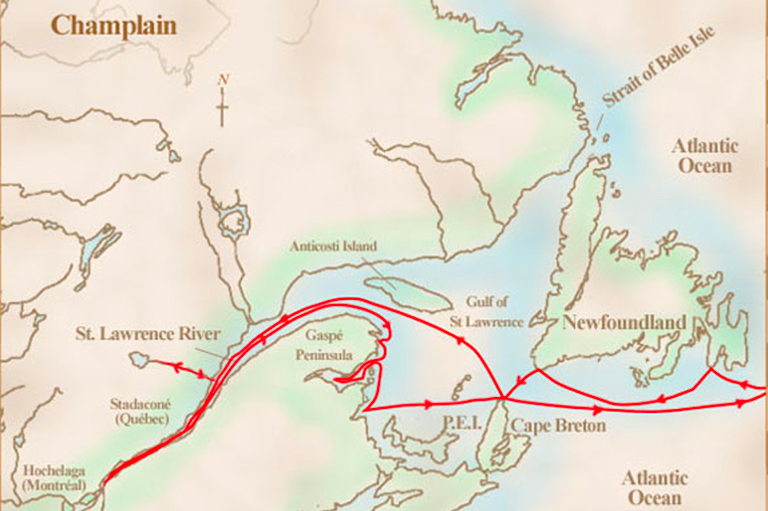Symbols in Fashion History
In this activity, students will explore a selection of textile artifacts that highlight women’s fashion from several decades of Canadian history. Students will be asked to analyze each piece and identify symbols present on the garment. They will learn about what societal influences have affected the structure and style of the garment as well as the person who wore the garment.
This activity is inspired by the Symbols in Canada issue of Kayak: Canada’s History Magazine for Kids.
Historical Thinking Concepts:
-
Establish historical significance
-
Use primary source evidence
-
Identify continuity and change
The clothes we wear tell the world something about ourselves. They are extensions of our personality, our creativity, and can be a form of expression. They reflect not only us but also the society in which we live. In this way, examining textile artifacts can tell us the same things about the people who wore them in the past. Each garment is covered in symbols expressed in the structure of the garment, the colour choice, the fabric used, and even in who wore it. Fashion is an ever changing medium and by examining pieces, we understand a lot about the people that lived before us and the society in which they lived.
Activity:
Start the activity by having a class discussion or small group discussion about the below questions:
-
How did you decide what to wear today?
-
What do you want to convey about yourself to others in your clothing?
-
Who determines what style is? What makes something fashionable?
-
What is trendy/fashionable today?
-
Do you follow trends?
-
Is being fashionable/trendy important?
You can print copies of the below images, display them on a projector, or ask students to pull them up on individual digital devices. Prompt your students to answer questions about the artifacts. Once revealing their first impressions, tell them more about the history of this dress.
Artifact 1 and Artifact 2:
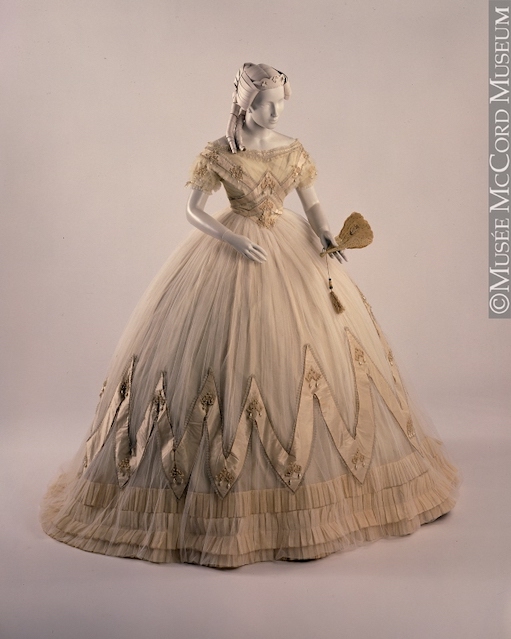
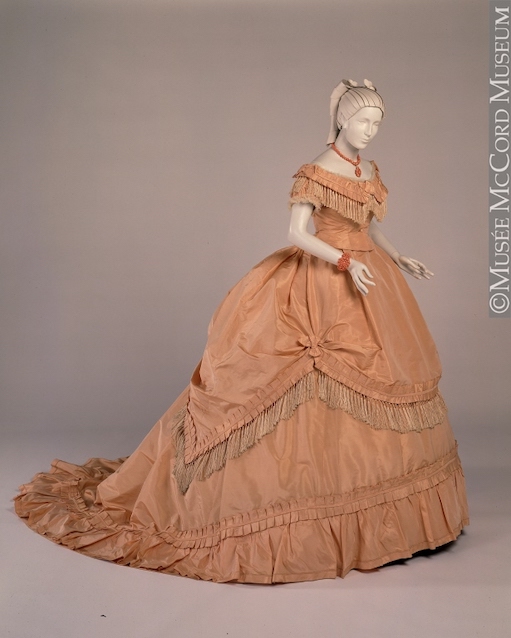
Context:
Image i features a wide, dome-like skirt (the widest style of the century) contrasted by a narrow corseted waist. The material, silk, taffeta, lace, and ribbon, evokes a sense of delicacy and fragility. The wide skirt is supported by crinoline, projecting as far out in the front as it does in the back. The small waist and clean lines of the bodice were created by a structured corset. Each undergarment served to create a highly feminized silhouette that was expected of any fashionable lady.
These elements symbolize women’s roles in society in the 19th century. Women were held to rigid gender roles both in behaviour and physical appearance. Women had to conform to this idea of femininity. Movement in this dress would have been restricted due to the under structure and the weight of the dress; simply entering a room would have been difficult with such a wide skirt.
Image ii features a slightly different silhouette highlighting the change at the end of this decade, pushing the bulk of the skirt to the back while slimming down the front. Although the skirt was slightly less voluminous, but still supported by corseting and crinoline, the dress would still be very difficult to maneuver through corridors and doorways.
Victorian society was heavily gendered and separated into two spheres: domestic and public. Women occupied the domestic sphere and took on all domestic roles like running the household and raising children. Women who needed to find work found it in domestic tasks like sewing and mending or housekeeping.
Conversely, the public sphere was everything outside the home and was exclusively male dominated. Men entered the public streets daily and performed several public tasks, and their fashion reflected that. Men required the ease of movement whereas women did not. Women’s everyday lives centered around the home thus they were not engaging in any strenuous activities.
Victorian medical discourse supported these rigid gender roles where the benefits of physical activity were advised only to men and boys. Women were strongly discouraged from any physical activity. Women were perceived to be so fragile that their constitutions simply couldn’t handle playing any sports. Even worse, physical activity could affect their ability to have children. These rigid gender roles are expressed clearly in women’s fashion of the time, affecting their ability to move freely.
We know the dress in Image i was worn by a member of the Molson family in Montreal, Quebec. Featured on this gown are several symbols of wealth: appliquéd medallions of pearls and lace, narrow box-pleated tulle trim, and more medallions on the sleeves, finished with a narrow silk ribbon.
Questions:
-
What sorts of images come to mind when you see this dress?
-
Who wore this dress?
-
What occasions would this be worn to?
-
Do you think this would be easy to move in?
-
How is this different from what we wear today?
-
Do you think either woman who wore this dress made it herself?
Artifact 3:
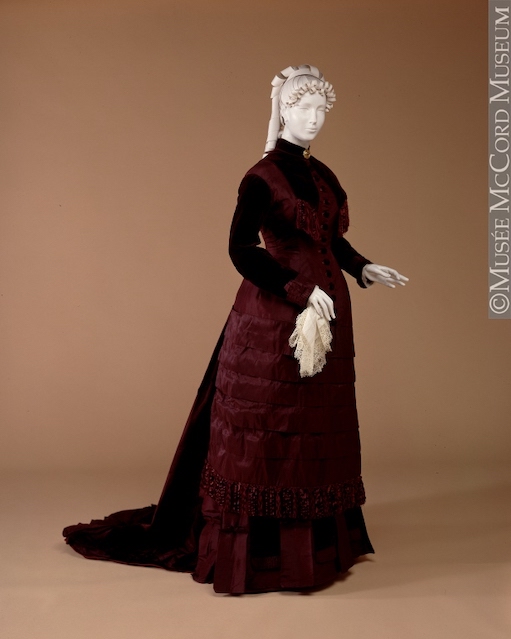
Context:
This is a wedding dress from 1878, although you probably wouldn’t have guessed it based on the colour. In Canada, and many Western cultures, white is a traditional bridal colour. This trend was started by Queen Victoria at her wedding in 1840, roughly 30 years earlier. For Victoria, white symbolized innocence, purity, and romance and was a deliberate choice to contrast her royal image. For years after Victoria’s wedding, white continued to symbolize stereotypical ideas of femininity for brides and reinforced notions of purity and innocence.
White, however, is also a luxurious colour. Not all brides could afford to commission or make such an extravagant dress that served only one purpose. Middle- and working-class women often favoured colours for wedding dresses that they could wear again on many different occasions, as we can see with this dress. Plum was a fashionable colour, the dye just recently discovered, but practical since she could wear it to another event. Furthermore, a white dress was simply impractical for working- and middle-class women. Cleaning the garment would have been an expensive and time-consuming process since it would easily show dirt.
Questions:
-
How is this different from what we wear today?
-
How has colour in our clothes changed?
-
Do we still want clothes for multiple occasions? What about single use clothing/outfits?
-
Does colour still hold the same symbolism in our clothing today?
Artifact 4 and Artifact 5:
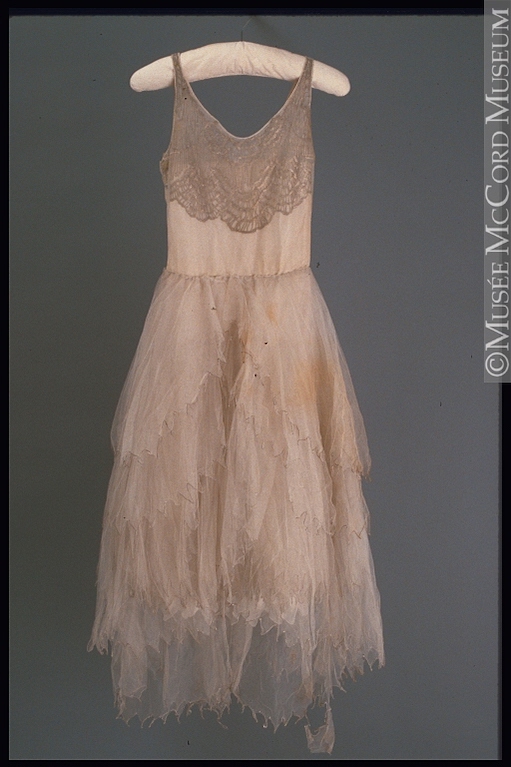
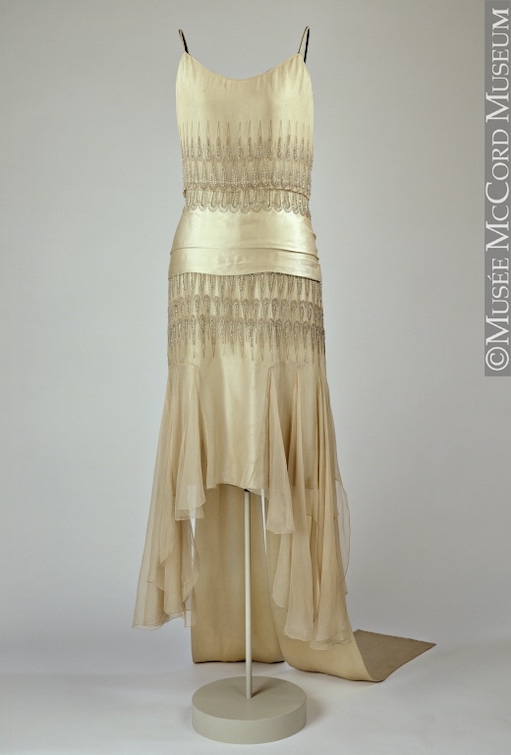
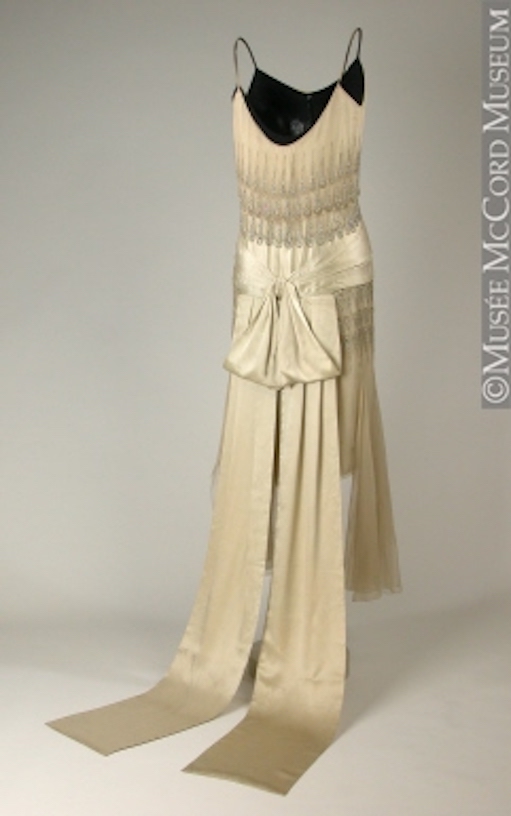
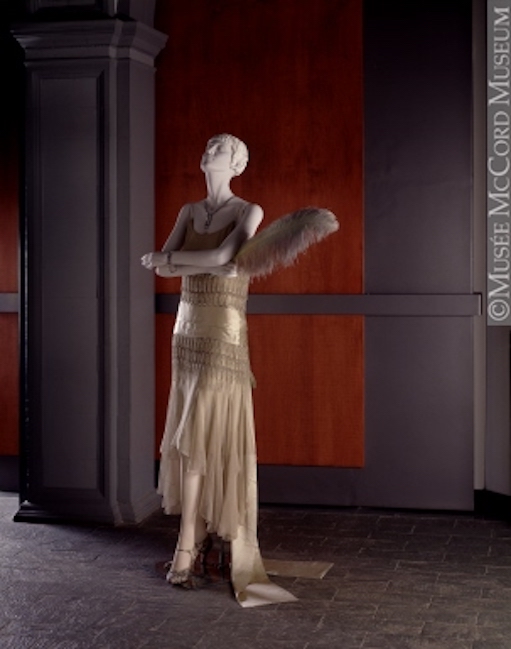
Context:
The 1920s was a decade of great social upheaval. These two dresses (Images iv-vii) are characteristic of popular women's fashion during this time. Both dresses have little structure to them, in contrast to the styles that dominated women’s fashion in the preceding years. The loose fit of the dress would hang off the body in more of a boxy shape, obscuring curves or natural waist. This was considered a radical style as it firmly rejected notions that female clothing needed to embellish a traditional female shape (i.e., small waist, large hips).
The shorter hemline was also a drastic change as it not only featured more skin, but also allowed for greater freedom of movement. This would have been very important to young women who were venturing into nightclubs for the first time and dancing! Each dress made in this style, like the two above, featured elements that would have embellished movement in the wearer. The scalloped layers on Image iv accentuated twirls and fanned out at each turn. Similarly, the dangling beads on Images v-vii add movement and flow to each of the wearer’s slight movements. While these are both exquisite examples, they were likely owned by wealthy women given the type of fabric used. However, this style of dress — the loose fitting, boxy shaped dress — was easy for working- and middle-class women to replicate. These styles did not require expensive or elaborate understructure which made fashion more accessible to non-wealthy women.
Freedom of mobility was an extremely important symbol during this era of fashion. Not only did it mean freedom of movement during physical activities like dancing or walking (women no longer got stuck in doorways with this style!), it also meant more social mobility. In a post-First World War society, the world was suddenly changed. The same rigid societal expectations that existed pre-war did not carry over into the 1920s. Those who survived the war were no longer focused on maintaining the strict societal expectations of their parents’ generation.
Women who had worked in factories during the First World War had their own disposable income. This meant that for the first time, women could spend it however they wanted; many young women frequented local bars and nightclubs, defining their generation as the infamous “flappers.” Flappers flouted social convention, drinking in public spaces (once only male dominated), spending their own money how they pleased, and spending much more time outside the home. The flapper and her peers were rebels of their time and represented many burgeoning freedoms for women in this era.
Questions:
-
Do you think this would be easy to move in?
-
How does this compare to some earlier examples of dresses?
-
Who do you think wore these dresses?
-
How is this different from what we wear today?
-
Why is the lack of structure so important?
Artifact 6:
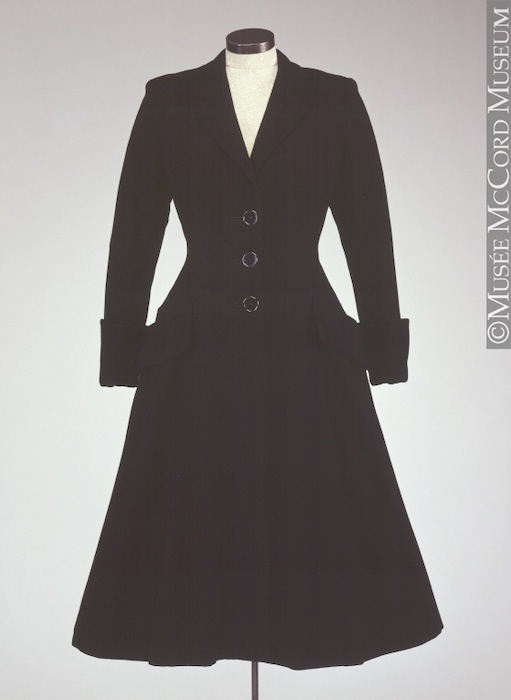
Context:
Christian Dior’s groundbreaking collection, the “New Look,” premiered in 1947. The collection featured rounded shoulders, cinched waists, and full skirts in each of its pieces. It was a celebration of ultra-femininity to contrast the material shortages and restrictions and the utilitarian clothing of the Second World War.
Dior’s New Look however was not completely new. The silhouettes featured across his new collection relied on tight fitting jackets and padded hips to highlight traditionally feminine waists and long A-line skirts — all styles that were popular before the Second World War. Although seemingly modern, Dior’s collection was not too far off from the corsets and crinolines of the previous century.
While Dior was celebrated for reviving the fashion industry in Paris once again and women across class lines and the world picked up his New Look, the ultra-feminine styles symbolized a return to the domestic sphere for women. From the 1920s and into the 1940s, women began entering into the public realm. There were more available job opportunities and Canadian women got the vote by this time; all of these social freedoms were also reflected in the fashions of the time period.
Yet, in the wake of the horrors of the Second World War, many Canadians felt their world had changed irrevocably, and that was troubling to many. In response, there was a strong desire to instill a return to normalcy, normal being pre-Second World War. This meant women who occupied jobs during the war were displaced in favour of men and were once again encouraged to return to the domestic realm to become wives and mothers and run their households. At the expense of women’s liberties, Canada reached some level of normalcy. So for many women, Dior’s ultra-feminine styles symbolized a return to rigid gender roles.
Questions:
-
How is this different from what we wear today? Is it that different?
-
How does this coat differ from the dresses at the beginning of the lesson (nearly a century prior)? Has anything changed?
Extension Activity:
Have your students browse McCord Museum’s textile collection. Let them pick out any piece they find to be most interesting or compelling and ask them to research any symbols they can find in the piece. Ask them to answer these questions:
-
Who wore this piece?
-
Can you find their name, or who donated the piece?
-
-
Can you speculate the class of this person?
-
What purpose did this piece serve?
-
Was it worn for everyday use or was it for a special occasion?
-
-
Is there something especially interesting about this piece?
-
E.g. Was it the first time a sewing machine was used? Is there a new style used here? Is it unique in any way?
-
-
During which time period was this worn?
-
Are there any significant influences from the time period that may have affected this style of dress?
Ask your students to create an exhibit on clothing from today. What styles would they include? What does clothing symbolize about our society today?
Resources:
-
Canadian Museum of History, Catalogues and Women’s Fashion
-
Canadian Museum of History, Women’s Wear "From Crinolines to Bustles: Fashionable Women’s Dress"
-
Canadian Museum of History, “Manly Men: Creating a Sober Look”
-
“How the modern flapper gal of the 1920s spurred moral panic in Canada,” CBC
Themes associated with this article
Advertisement

